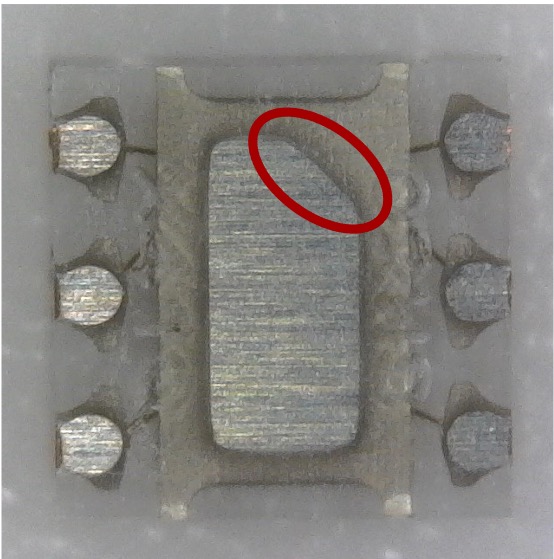SBASA69B August 2023 – December 2024 OPT4003-Q1
PRODUCTION DATA
- 1
- 1 Features
- 2 Applications
- 3 Description
- 4 Pin Configuration and Functions
- 5 Specifications
- 6 Detailed Description
- 7 Register Maps
- 8 Application and Implementation
- 9 Device and Documentation Support
- 10Revision History
- 11Mechanical, Packaging, and Orderable Information
Package Options
Mechanical Data (Package|Pins)
- DNP|6
Thermal pad, mechanical data (Package|Pins)
Orderable Information
8.5.1.1 Soldering and Handling Recommendations (USON, SOT-5X3 Variant)
The OPT4003-Q1 is qualified for three soldering reflow operations as per JEDEC JSTD-020.
Excessive heat can discolor the device and affect optical performance.
See the QFN and SON PCB Attachment application note for details on the soldering thermal profile and other information. Discard the device and do not reattach if the OPT4003-Q1 must be removed from a PCB.
As with most optical devices, take special care to make sure that optical surfaces of the device stay clean and free from damage. See Section 8.3 for more detailed recommendations. For best optical performance, solder flux and any other possible debris must be cleaned after the soldering processes.
Figure 8-5 shows how to identify pin 1 on the bottom side of the package. Figure 8-7 shows various identification features for pin 1 on the top side of the package.


| NOTE: The bottom side of the device features an angled feature to denote pin 1. |
 Figure 8-6 Pin 1 Identification Features
for SOT-5X3 Package
Figure 8-6 Pin 1 Identification Features
for SOT-5X3 Package Figure 8-7 Pin 1 Identification Features for USON Package
Figure 8-7 Pin 1 Identification Features for USON Package